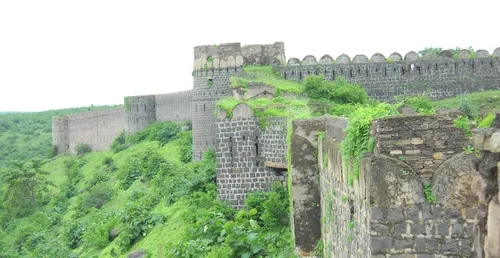
Gugor Fort: A Hidden Gem in Rajasthan
Situated in the rugged terrain of Rajasthan, Gugor Fort stands as an intriguing relic of the region’s medieval past. Though lesser-known compared to other Rajasthani forts, Gugor Fort offers a unique glimpse into the architectural and historical grandeur of the area. Here’s an exploration of what makes Gugor Fort a noteworthy destination for history buffs and travelers.
Historical Overview
The Origins of Gugor Fort
Gugor Fort is believed to have been constructed during the 14th century, a period marked by the rise of various regional powers in Rajasthan. It is attributed to the Rajput rulers of the time who built it to strengthen their strategic control over the region. The fort played a significant role in local politics and military affairs, serving as a defensive stronghold and a royal residence.
Architectural Significance
The fort’s architecture reflects the ingenuity of Rajput military design, adapted to the rugged and arid landscape of Rajasthan.
- Strategic Position: Gugor Fort is located on a hilltop, providing a commanding view of the surrounding area. Its elevated position made it a strategic vantage point for defense and surveillance.
- Fortifications: The fort features strong defensive walls, bastions, and gates. The design of these fortifications is typical of Rajput military architecture, focusing on both defense and grandeur.
- Inner Structures: Inside the fort, visitors can find remnants of various structures, including palaces, temples, and water reservoirs. Although some parts are in ruins, the remaining elements offer insights into the fort’s historical and architectural significance.
Exploring Gugor Fort
A visit to Gugor Fort provides a mix of historical exploration and natural beauty. Here’s what to look out for:
- The Fort Walls and Gates: Begin your exploration with the fort’s formidable walls and gates. The defensive architecture showcases the fort’s strategic importance and its role in regional defense.
- The Viewpoint: Climb to the fort’s highest point to enjoy panoramic views of the surrounding landscape. The hilltop location provides a stunning vantage point over the arid terrain and nearby settlements.
- Architectural Remnants: Explore the remaining structures within the fort. Although some parts are in ruins, the architectural details, including carvings and frescoes, reveal the artistic skills of the time.
- Natural Surroundings: Take time to appreciate the natural beauty surrounding the fort. The rugged landscape and arid environment add to the fort’s dramatic and picturesque setting.
Practical Tips for Visitors
- Best Time to Visit: The best time to visit Gugor Fort is between October and March when the weather is cooler and more comfortable for exploring.
- Getting There: Gugor Fort is located in the remote regions of Rajasthan. It is advisable to reach the nearest town or city and then travel to the fort by road. Ensure you have reliable transportation, as the roads leading to the fort may be less developed.
- Dress Comfortably: Wear comfortable clothing and sturdy footwear suitable for walking and climbing. Given the fort’s location, it’s also advisable to bring sun protection and stay hydrated.
- Local Guides: Hiring a local guide can enhance your visit by providing historical context and stories about the fort’s significance.
Gugor Fort, with its rich history and dramatic location, stands as a testament to Rajasthan’s architectural and military heritage. While it may not be as widely known as other Rajasthani forts, it offers a unique and rewarding experience for those interested in exploring the region’s historical and cultural landscape.
Embark on your journey to Gugor Fort, and immerse yourself in the timeless beauty and history of this hidden gem. Discover the architectural marvels, enjoy the panoramic views, and experience the charm of Rajasthan’s lesser-known yet fascinating historical sites.
